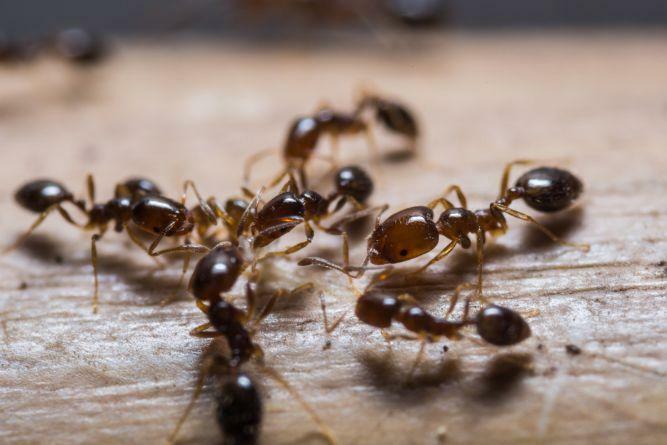
Are you dealing with an intense termite or carpenter ant problem? Because both of these insects tend to burrow in the wood of your home, it can be challenging to tell the difference between them. Proper identification is key to getting the right pest control services, so here’s what you need to know about the two groups:
While it may not be the easiest way to determine the difference between carpenter ants and termites, you can examine them closely to spot which is which. Their bodies are different, and so are their behaviors.
There are a few major structural differences in the bodies of carpenter ants and termites. If you can spot one of these insects in your home, take time to survey it for some of these signs to see if you can pinpoint the differences, starting with their wing size and shape.
Both will have four wings, but the shape and size of the wings are one of the simplest telltale signs that you’re seeing different types of insects. On termites, you’ll find four wings that are all the same size and shape (two on each side). Flying ants, like carpenter ants, will also have four wings, but the hind wings will be a bit shorter than the front ones.
Their bodies are also clearly different. Ants have a waist, whereas termites do not. The colour will also vary, with ants being darker with colours like black, dark brown, or even a slight red tint. Termites are lighter, sometimes even a cream colour though a swarmer can be dark brown or black which makes it harder to distinguish from an ant.
Even their antennae are different: Carpenter ants have bent antennae, whereas termites have straight antennae.
If you’re a little too squeamish to get close to the insects taking over your home, you might be able to tell the difference based on their behavioural traits. Carpenter ants have no problems being out in the light, and they dig smooth tunnels in the wood of your home to build their nests.
On the other hand, termites are the opposite of carpenter ants in pretty much every way. They tend to avoid the light and prefer to congregate in the darkness. You may not see them until the sun goes down, or they might hide out in dark parts of the home, like the crawl space. Their tunnels and galleries are also a lot more rugged and tend to be filled with dirt and debris.
Perhaps the most common similarity between termites and carpenter ants is their propensity to chew through the wood that supports your home. For the most part, these two types of insects are very sneaky and insidious as they devour your home. Both will dig tunnels and galleries that put your home at risk of structural problems.
One of the most significant differences between carpenter ants and termites is their overall diet. Termites can use the wood of your home for nutrition as a major staple in their diet. On the other hand, carpenter ants chew into the wood not for sustenance but for shelter. They may journey out from your home to obtain their next meal.
Carpenter ants will eat plant and fruit juices, smaller insects, and even insect honeydew. If they take up residence in your house, don’t be surprised if you catch them nibbling on your food in the kitchen. They also love sugar, meat, and other tasty morsels.
Termites enter the home through wood that’s in contact with the ground. They may start their journey through door frames, deck posts, or your crawl space. It’s also possible that they’ll find cracks in the foundation and wiggle their way in.
Ants tend to get in the house more easily than termites. They’ll enter the home through cracks that surround your doors and windows or other gaps in the walls of your home. If they’re determined to get in and you don’t have any entry point, they’ll make their own by burrowing through wet or damaged wood.
You can easily tell the difference between termite and carpenter ants by paying attention to their bodies and behavioural differences. However, you may also be able to tell based on the damage seen around the house. Carpenter ants dig neat tunnels and galleries into your wood and may forage for food around your home. Termites tend to create mud tubes which are uneven tunnels filled with soil and waste products.
Carpenter ants generate small piles of sawdust next to holes in their wood, primarily around wet or damaged wood. If you spot these piles near water, then it’s likely that you’re dealing with a carpenter ant infestation rather than termites.
Eliminating a carpenter ant problem is relatively easy, as all you have to do is eliminate the conditions that brought them to your home in the first place. Clear up any water sources and repair the damaged wood that’s so appealing to these insects. You might also need some chemical insect killer applied by a pest control company.
Termites will always require professional intervention to eliminate them. Get help as soon as possible to lessen the risk to the structure of your home.
When you need pest control in Winnipeg, Gilles Lambert Pest Control is ready and waiting to assist. We can help you get your carpenter ant or termite problem under control quickly!


